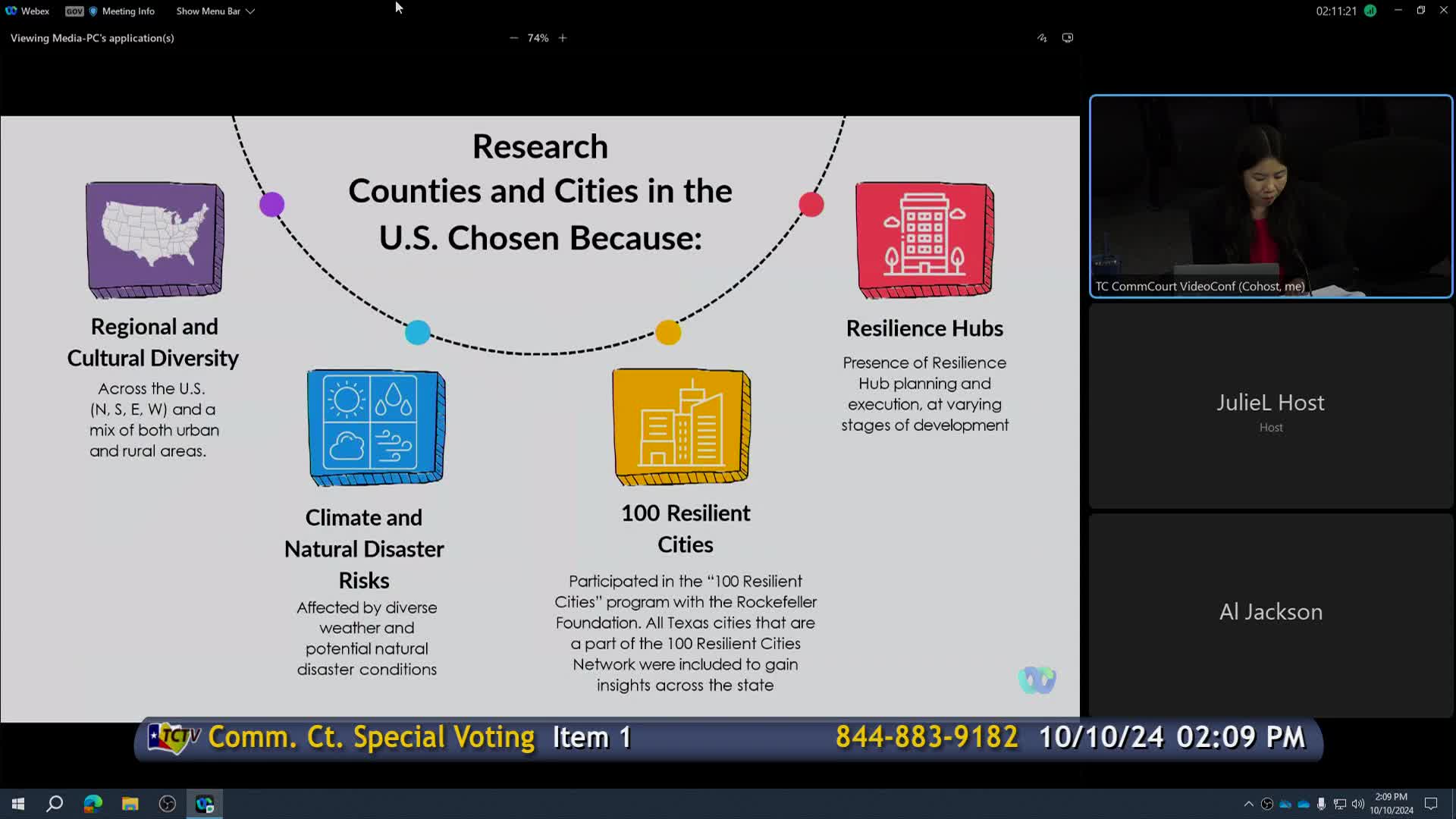Cities redefine resilience hubs to tackle climate challenges
October 10, 2024 | Travis County, Texas
This article was created by AI summarizing key points discussed. AI makes mistakes, so for full details and context, please refer to the video of the full meeting. Please report any errors so we can fix them. Report an error »

In a recent government meeting, officials discussed the progress and challenges of resilience initiatives across various cities that participated in the 100 Resilient Cities program. The conversation highlighted the diverse definitions and implementations of resilience hubs, which are designed to enhance community preparedness and response to disasters.
Participants noted that while definitions of resilience were largely consistent, there were notable exceptions. For instance, Detroit emphasized a climate-centered approach, while New York focused on adaptation rather than resilience. Florida's definition included land management, and Montgomery County prioritized disaster response. Davidson County's approach was more aligned with climate change concerns. This indicates a trend where resilience efforts are predominantly driven at the city level rather than the county level.
The meeting also revealed that resilience offices often lack specific budgets, making financial transparency a challenge. Additionally, public health considerations were less emphasized in resilience planning, likely due to the existence of dedicated public health departments in many areas. Many resilience offices are integrated with other departments, such as environment or sustainability, which may dilute their focus.
Challenges in establishing resilience hubs were also discussed. These hubs, which are typically based on the Urban Sustainability Director's Network model, require extensive collaboration between government entities and nonprofits. They often utilize existing community structures, such as churches and community centers, to serve dual purposes during both normal operations and disaster situations. However, budgetary discrepancies among hubs were noted, indicating a need for more standardized funding approaches.
Overall, the meeting underscored the importance of tailored resilience strategies that reflect local needs while fostering collaboration across sectors to enhance community resilience.
Participants noted that while definitions of resilience were largely consistent, there were notable exceptions. For instance, Detroit emphasized a climate-centered approach, while New York focused on adaptation rather than resilience. Florida's definition included land management, and Montgomery County prioritized disaster response. Davidson County's approach was more aligned with climate change concerns. This indicates a trend where resilience efforts are predominantly driven at the city level rather than the county level.
The meeting also revealed that resilience offices often lack specific budgets, making financial transparency a challenge. Additionally, public health considerations were less emphasized in resilience planning, likely due to the existence of dedicated public health departments in many areas. Many resilience offices are integrated with other departments, such as environment or sustainability, which may dilute their focus.
Challenges in establishing resilience hubs were also discussed. These hubs, which are typically based on the Urban Sustainability Director's Network model, require extensive collaboration between government entities and nonprofits. They often utilize existing community structures, such as churches and community centers, to serve dual purposes during both normal operations and disaster situations. However, budgetary discrepancies among hubs were noted, indicating a need for more standardized funding approaches.
Overall, the meeting underscored the importance of tailored resilience strategies that reflect local needs while fostering collaboration across sectors to enhance community resilience.
View full meeting
This article is based on a recent meeting—watch the full video and explore the complete transcript for deeper insights into the discussion.
View full meeting
